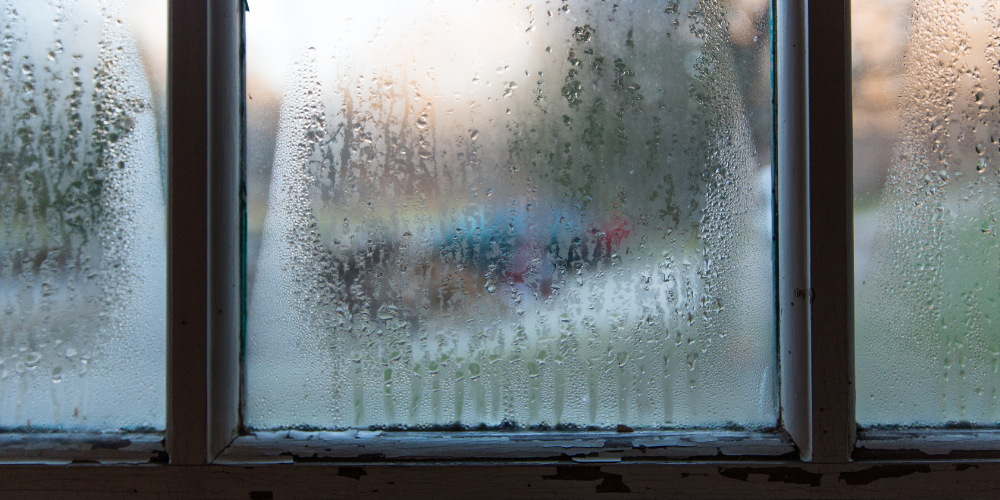Blown Double Glazing & What To Do About It
One of the most popular problems that people have with their double glazed windows is getting condensation in between the panes of glass. If you are seeing this in your window panes, it means that your double glazing has failed. This can also be known as a blown double glazing unit.
Why is there condensation inside my double glazed windows?
Double glazing is made by putting two panes of glass together with a thermally efficient spacer bar in between. This is then sealed to make it into a double glazed unit. When the seal on the double glazed unit breaks down (or “fails” as is known in the industry) that condensation will get into the inside of the glass unit, resulting in misted or blown double glazing. If the seal is broken, then air can seep inside. Air contains microscopic droplets of water, which is what you see forming as condensation between the panes of glass.
Can I leave my blown double glazing? What effect will it have on my property?
Aside from the obvious issue of the condensation obscuring the view from your windows, blown double glazing will interfere with the energy efficiency of your windows. If the seal has broken, the glazing is no longer a “sealed unit”, so it will not be performing the function of a sealed double glazed unit; it can no longer keep the cold out, or allow energy generated by your heating system in and allow solar gain to be retained within the house. While this may not be such a problem in the summer months when you can open windows to let the breeze through, but we would always advise to have them replaced well before the winter months, to ensure that your heating is working as hard as it can for you.
Can failed double glazing be repaired?
Technically yes, blown double glazing can be repaired, but we really don’t recommend it! Essentially, the seal can be fixed with a repair by simply renewing the seal on the entire window, but this won’t help the misting or condensation already within the panes. You can get a DIY misting repair kit from Amazon – in our experience using one of these can cause more harm than good, as it involves drilling a small hole into the window, leaving the window to clear as much as it can, cleaning the inside of the panes with a magnetic tool, inserting drying pellets that eventually disappear and plugging the hole with the provided clear cement. You will also have to re-seal the unit, and these repairs will need doing regularly. The best way to repair blown or failed double glazing is a complete replacement of the windowpanes.
Do I need to replace the window frames as well?
In most cases, you won’t need to replace your frames to fix your failed double glazing! Replacement double glazed units are a much cheaper alternative to installing new windows. A misted-up window is due to the seal on the glass, which has nothing to do with the frame itself. As long as the frame is in good condition, you simply need to replace the glass unit inside. When performing double glazing repairs, it is a great opportunity to upgrade the glass to A-rated energy-efficient glass to get better insulation and lower your heating bills.
Warranties and guarantees for double glazing
Before you go about replacing any blown double glazing, you should check the warranty that you have. If the glazing is still within warranty, you should give the installers a call to let them know what the situation is and they may rectify the problem at their own cost depending on what the warranty includes. It’s worth speaking to the installers of your window in any case, if your warranty has expired, they may still be able to offer you a reduction in repair or replacement costs. Our Staywarm Energy insulated glazing comes with a 10 Year Insurance Backed Guarantee, and if we are installing our signature Maxitherm+ insulated glass upgrades into uPVC frames, we offer a Lifetime Guarantee!
What causes condensation on the outside of the double glazed unit?
Condensation on the room-facing side of your double glazing means there is a ventilation problem within that particular room that needs addressing. You can also get condensation on the inside of the units when clothes are being dried in a room when it is cold and wet outside. Condensation on the exterior means the double glazed unit is performing exactly as it should and you will notice it disappear throughout the day as the sun rises. This phenomenon is a natural occurrence and not a fault with the glass or the window, and is not due to your double glazed window failing as described above. The situation occurs mainly in Spring and Autumn, when the glass temperature falls to a low level at night, with the moisture of a heavy morning dew condensing against the cold surface of the glass.


